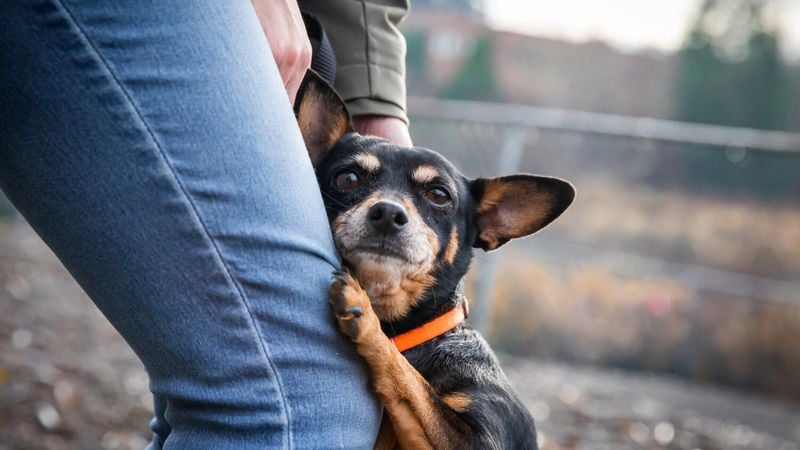More Dogs Are Being Prescribed Anxiety Meds and These 8 Common Stressors Could Be Why
Our furry friends are experiencing more stress than ever before, and veterinarians around the world are taking notice. There’s been a clear rise in the number of dogs being prescribed anxiety medication as more pet owners recognize the signs of emotional distress in their companions. Just like humans, dogs can suffer from mental and emotional struggles that impact their daily lives—often in ways we might overlook.
Whether it’s due to long hours alone, loud noises, or changes in their environment, anxiety in dogs can show up as restlessness, destructive behavior, clinginess, or even aggression. Understanding what might be causing your dog’s anxiety is the first step in helping them feel safe, calm, and cared for.
Here are eight common stressors that could be behind your dog’s anxious behavior—and why more vets are turning to medication as part of the solution.
1. Separation Anxiety: When Being Alone Feels Scary
Dogs are pack animals who form deep bonds with their families. When suddenly left alone, many pups experience genuine panic that manifests as destructive behavior, excessive barking, or bathroom accidents.
This condition often develops after a change in schedule, like when pet parents return to office work after working from home. Some breeds are particularly prone to this condition, including Labrador Retrievers and German Shepherds.
Training techniques like gradual departures and special toys reserved for alone time can help mild cases, but severe separation anxiety might require professional behavioral therapy alongside medication.
2. Noise Phobias: Thunder, Fireworks, and Other Scary Sounds
Many dogs tremble, hide, or panic when exposed to loud noises. Thunderstorms and fireworks top the list of sound-related triggers, but construction noise, vacuum cleaners, and even doorbells can spark fear in sensitive pups.
The unpredictability of these sounds makes them especially frightening. Your dog can’t understand where the noise comes from or when it will stop. Some dogs develop such severe responses that they injure themselves trying to escape.
Creating safe spaces, using noise machines, and desensitization training can help. For dogs with extreme reactions, veterinarians often recommend medication during predictable events like July 4th celebrations.
3. Rescue Trauma: Past Experiences Shape Present Fears
Dogs rescued from neglectful or abusive situations often carry emotional scars that manifest as anxiety. A dog who flinches when you raise your hand or cowers at the sight of certain objects might be responding to memories of past trauma.
The brain chemistry of these dogs can be permanently altered by their experiences. Sudden movements, loud voices, or specific triggers connected to their past can cause intense fear responses that seem disproportionate.
Building trust takes time and patience. Consistent routines, gentle handling, and positive reinforcement help create security. Some rescue organizations now include anxiety medication as part of rehabilitation programs for severely traumatized dogs.
4. Canine Cognitive Dysfunction: When Senior Dogs Get Confused
Just like humans can develop dementia, older dogs sometimes experience a condition called Canine Cognitive Dysfunction (CCD). This age-related mental decline causes confusion, disorientation, and anxiety, especially at night.
Senior pups might pace, vocalize excessively, or seem lost in familiar surroundings. They may forget training they’ve known for years or no longer recognize family members. These changes can be frightening for dogs who suddenly don’t understand their world.
While CCD can’t be cured, medication can help manage symptoms and improve quality of life. Maintaining routines, providing mental stimulation, and keeping their environment consistent gives senior dogs the security they need during this challenging time.
5. Generalized Anxiety Disorder: Constant Worry Without Clear Triggers
Some dogs seem perpetually on edge without any obvious reason. They might pace, pant, tremble, or show other stress signals even in calm, familiar environments. This condition resembles generalized anxiety disorder in humans.
Breeds with high intelligence or working backgrounds often develop this condition when their mental and physical needs aren’t fully met. Border Collies, Australian Shepherds, and German Shepherds frequently fall into this category.
A combination of increased exercise, mental stimulation through puzzle toys, and consistent training often helps. Dogs with severe cases benefit from medication that adjusts brain chemistry, allowing them to respond better to behavioral modification techniques.
6. Fear Aggression: When Feeling Threatened Leads to Reactive Behavior
A dog lunging and barking at strangers or other animals isn’t being mean – they’re often terrified. Fear-based aggression develops when dogs learn that aggressive displays make scary things go away.
The body language tells the story: raised hackles, stiff posture, whale eye (showing whites), and a tucked tail even while growling or barking. These dogs aren’t trying to dominate; they’re desperately trying to create distance from perceived threats.
Counter-conditioning helps by changing emotional responses to triggers. A certified animal behaviorist can create a treatment plan, often including medication to lower baseline anxiety so the dog can learn new responses without being overwhelmed by fear.
7. Travel and Vet Anxiety: When Car Rides and Clinics Cause Panic
Car sickness, unfamiliar environments, and association with uncomfortable procedures make travel and vet visits particularly stressful for many dogs. Some start shaking at the mere sight of a carrier or car keys.
The clinical smells, slippery examination tables, and handling by strangers at vet offices trigger fight-or-flight responses in even the friendliest dogs. This anxiety can make necessary medical care difficult to provide and traveling nearly impossible.
Practice visits without procedures can help desensitize your dog to the veterinary environment. For severe cases, pre-visit medications reduce anxiety, allowing for more positive experiences. Some veterinarians now offer fear-free certification, using techniques specifically designed to minimize stress during appointments.
8. Socialization Gaps: When Early Learning Opportunities Were Missed
Puppies have a critical socialization window between 3-14 weeks when their brains are primed to accept new experiences. Dogs who missed diverse, positive exposures during this period often develop fear-based behaviors later in life.
A puppy raised in isolation might grow into an adult who finds normal things terrifying – children, men with beards, umbrellas, or stairs. Their world becomes frighteningly unpredictable because they lack the foundation to understand these aren’t threats.
Adult dogs with socialization gaps can improve with careful, gradual exposure therapy. Medication sometimes helps by lowering anxiety enough to allow learning to occur. Progress takes time, but many dogs make significant improvements with consistent, patient training.














